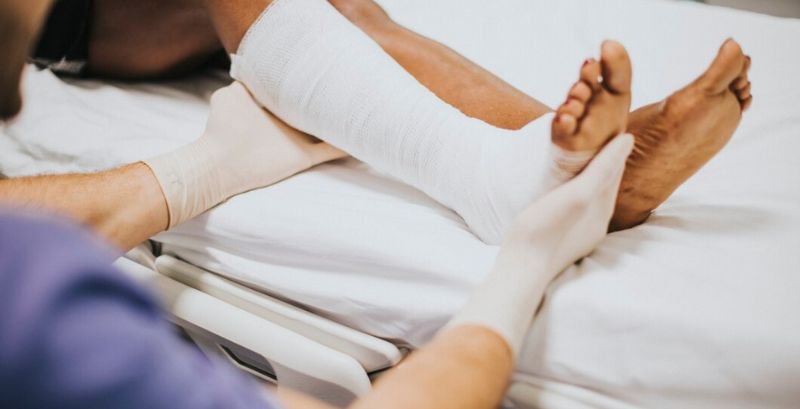Have you been injured? After an accident, you might deal with pain, trouble sleeping, discomfort, anxiety, memory issues, lost income, medical bills, and other problems that can affect your daily life.
To get fair compensation, it’s important to understand what’s needed for a personal injury claim and gather the right documents to support your case.
You’ll need documents to show your injury, the treatment and costs involved, and details about the accident that caused it.
Here is a guide to help you gather the right information for your accident injury claim.
Personal Injury Case Checklist
To support your case, you need solid documentation of your injury and the impact it’s had on your life. Why is this important?
Keeping track of your injuries and treatment over time strengthens your claim and can help you get the compensation you deserve.
By documenting your injuries and financial losses, you can clearly show how the accident affected you.
It also helps you remember key details about the accident and your recovery, which will be useful in your case.
What Documents Do I Need to Prove My Injury?
To build a strong personal injury case, you’ll need to gather a variety of important documents. Here are the key documents you should keep after your injury:
- Police reports and exchange sheets
- Accident reconstruction reports
- Specialist medical reports
- A treatment journal
- Private investigation reports
- Medical bills
- A personal journal of events
- Witness statements
- Payment receipts
- Communication with your insurance company
- W-2 forms (proof of income)
- Victim statements
- Initial medical exam results
- Repair invoices
- Reports of other incidents or complaints
- Insurance cards
- Photos of the accident scene, property damage, and your injuries
These documents are crucial to supporting your personal injury claim and proving your case.
1. Official Reports
There are several important documents in the “official reports” category that can help support your personal injury claim. These include:
Law Enforcement/Police Reports
One of the first steps in proving a personal injury claim is obtaining a police report. In Delaware, you must report a car accident to the police if:
- The accident caused an injury or death.
- It involved a driver under the influence of drugs or alcohol.
- It happened on a public highway and caused at least $500 in property damage.
Even if it’s not legally required, contacting the police is a good idea, as you may need the report to file an insurance claim.
Police reports typically include details about the accident scene, injuries, property damage, and often a diagram of the crash. They also identify witnesses and indicate who the police believe was at fault.
Accident Reconstruction Reports
Sometimes, an expert will be needed to recreate the accident to explain how it happened.
The expert examines the scene, takes measurements, and uses computer software to create a detailed reconstruction of the event. Attorneys can help arrange for these experts if needed.
Reports from Other Agencies
Other agencies, like OSHA, may investigate accidents that fall under their authority. These agencies often produce reports that can be valuable in your personal injury case.
Private Investigations
Private investigators may be hired to gather evidence for an insurance claim or lawsuit.
They can help verify the facts of the case and strengthen your claim, which can improve your chances of a successful outcome.
2. Photo Documentation
Photos and videos are powerful pieces of evidence that can help prove your personal injury claim.
They can also assist your insurance company in determining the cause of the accident and who was responsible.
After an accident, it’s important to take photos right away to document the injuries, the scene, any damage, and the people involved.
Taking Photos Immediately
As soon as the accident happens, try to take photos as quickly as possible. These photos can:
- Show the accident visually: Pictures help capture important details, such as the accident location, the position of the vehicles, and even weather conditions (like snow or rain) that might explain the cause of the crash.
- Refresh your memory: After an accident, it’s easy to forget details. Photos can help you remember exactly what happened, which is helpful when talking to your insurance company or testifying.
- Preserve evidence: Photos serve as lasting proof of the accident’s impact, which can support your personal injury claim when dealing with insurance adjusters.
What Photos to Take for a Personal Injury Claim?
If you’ve been injured, taking pictures of your injuries is crucial. Whether it’s a workplace injury or an accident, photo evidence makes it easier to prove your injury. Be sure to photograph the following:
- Cuts, bruises, or other visible marks
- Torn or bloody clothing
- Swelling
- Hospital beds or bandages
- Any medical devices (like casts, braces, or crutches)
Photos of the Accident Scene
If it’s a car accident settlement, take photos of the scene, including nearby traffic lights, stop signs, and the surroundings (like intersections or parking lots).
Pictures of the damage to your car (and any other vehicles) from different angles, both close-up and from a distance, can help show what happened and who was at fault.
For example, dents in a vehicle can provide clues about the cause of the crash.
Surrounding Damage
Document any other damage around the accident scene, like broken vehicle parts or skid marks. These details can help prove the severity of the accident.
Skid marks, for instance, can show that a driver tried to stop suddenly, while the absence of skid marks might suggest a driver didn’t brake because they were distracted.
Photos of People Present
Take photos of those involved in the accident and any witnesses, including passengers and police officers.
This can help you keep track of everyone who was present. However, avoid taking pictures of other injured individuals—focus on documenting your own injuries.
These photos can be invaluable for your personal accident claim, helping you prove what happened and strengthening your claim for compensation.
3. Statements
In addition to official reports and photos, it’s important to gather witness statements, keep a personal injury journal, and collect victim statements.
Witness Statements
Witness statements can significantly influence your personal injury lawsuit, so try to collect them as soon as possible.
You might consider hiring a private investigator to obtain these statements. They can reach out to witnesses and conduct recorded interviews or collect written and signed statements.
The best approach depends on your situation. For example, written statements are useful when there’s a lot of disagreement about what happened.
The private investigator will meet with witnesses to ask them what they saw and help clarify their memories, which can affect who is held responsible.
Your Personal Injury Journal
Keep a daily journal about your injury and medical care. Include as much detail as you can, such as the level of pain you feel and any difficulties you face because of your injuries.
You might also want to write about how your injury has affected your relationships with others.
You can write in your journal by hand or type it out if your injury makes writing difficult.
Remember, your journal should be private, and only your attorney should have access to it. They can help you decide what to include and how often to update it.
Victim Statements
Victim statements are written or spoken accounts shared in court to explain how a crime has affected you.
Many individuals provide written statements to the judge during sentencing, but usually, only a few people directly connected to the incident will speak during the hearing.
Collecting these statements can be essential in building a strong case for your personal injury claim.
Finally
If you delay getting help from a lawyer for a personal injury claim, you might hurt your case and receive less money in compensation. Waiting to seek legal assistance could also lead to you paying more for the damages you’ve experienced.
Keep Reading
Want more? Here are some other blog posts you might be interested in.




